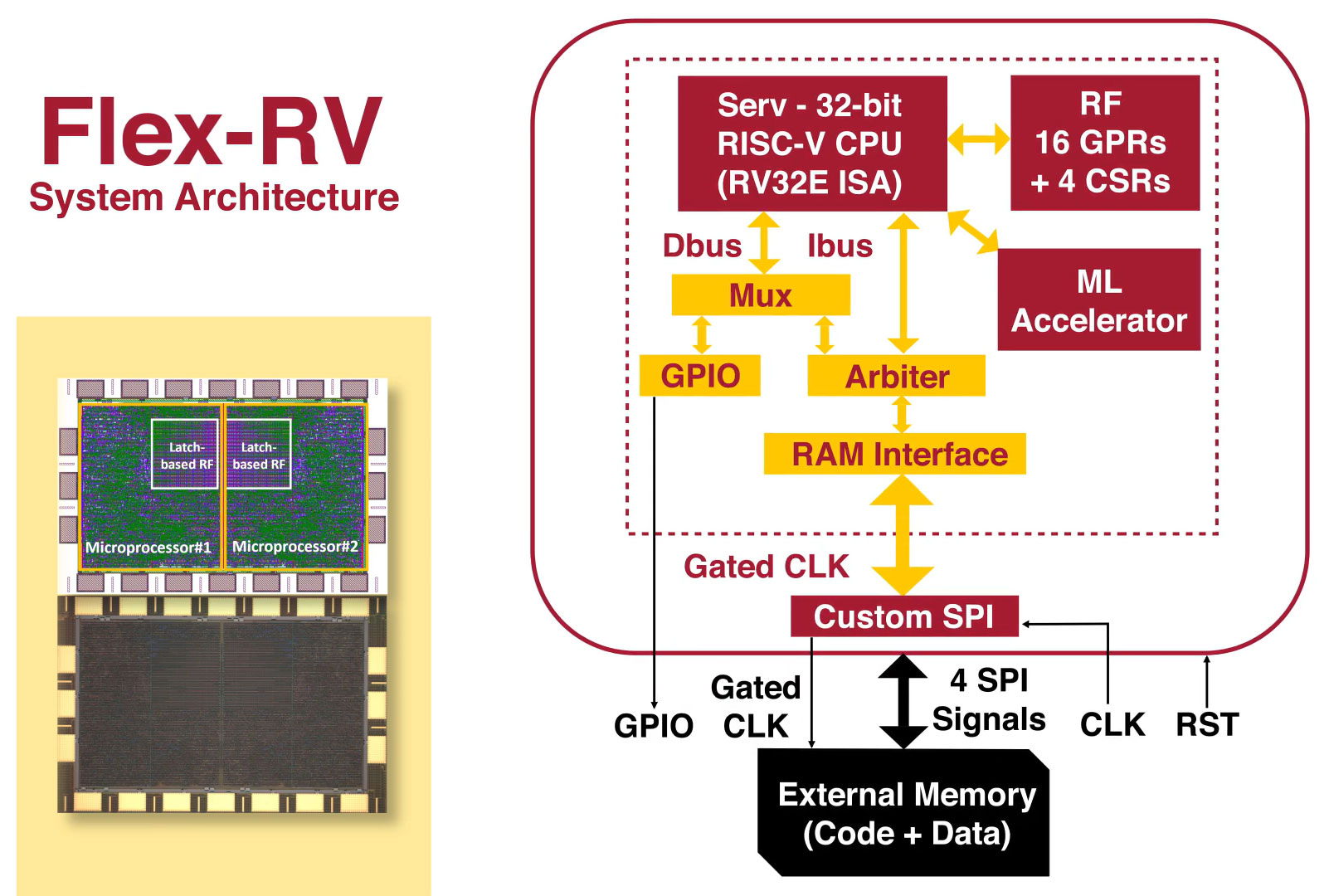Bendable non-silicon RISC-V CPU demoed running while wrapped around a pencil
Pragmatic Semiconductor’s programmable Flex-RV chip costs less than a dollar to produce.

Cambridge-based Pragmatic Semiconductor has demonstrated its Flex-RV bendable non-silicon RISC-V processor. On Wednesday, the firm published a blog, Nature paper, and video to showcase what it calls “the world’s first 32-bit microprocessor in a flexible technology that is fully functional while flexed.” Pragmatic also boasted that the Flex-RV is machine learning capable and can be produced for less than a dollar.
In the video, you can see a Flex-RX processor sample being wrapped around a pencil while executing simple commands. The demo shows that the physically flexible general-purpose RISC-V processor can be coiled tighter than a 5mm radius. Then, we see it put through some tensile bending, flattened, and compressive bending before being unfurled again. Programs can always continue to execute without missing a beat (or crashing or freezing).
Flex-RV builds on Pragmatic’s prior flexible electronics works, namely FlexPCB (a flexible printed circuit board design) and FlexIC (flexible integrated circuits) fabricated with IZGO tech on TFTs. The processors are less than 80µm thick, including the PCB, consume less than 6mW of power, and offer outstanding flexibility plus affordability.
Above is an overview of the Flex-RV system architecture. If you look carefully at the schematic, you can see that a programmable ML hardware accelerator accompanies the open Servant RISC-V CPU. Other SoC bits and pieces include a register file (RF), a debug switch, a multiplexor switch, an arbiter, a RAM interface, an on-chip RAM block, and a General-purpose Input/Output (GPIO) interface. Programs are loaded into the on-chip RAM through the debug switch and external memory access.
However, the Flex-RV’s tech performance specs will not excite many readers. Test samples feature 12,600 logic gates and have average and maximum clock speeds of 52 kHz and 60 kHz, respectively.
Emre Ozer, Pragmatic’s Senior Director of Processor Development and lead researcher, has high hopes for the Flex-RV. The press release quotes Ozer as characterizing the flexible new processor as an exciting step forward for the industry. Moreover, the collaborative work between Qamcom and Harvard scientists “will democratize access to computing, unlocking emerging applications while opening the door to sub-dollar computing,” claimed Ozer.
The Pragmatic boss reckons that open-source flexible processors with ML processing capability and such a low cost could be attractive for applications such as FMCG, wearables, and single-use healthcare equipment.
Get Tom's Hardware's best news and in-depth reviews, straight to your inbox.
Flex-RV outflexes previous similar projects physically and computationally. For example, the earlier PlasticArm was a collaboration between Pragmatic and Arm in 2021. PlasticArm used Arm Cortex M0 cores but was non-programmable, was limited to three hardwired programs in its read-only memory, and ran at an even slower sub-30 kHz while consuming 3.5X as much power (21mW).

Mark Tyson is a news editor at Tom's Hardware. He enjoys covering the full breadth of PC tech; from business and semiconductor design to products approaching the edge of reason.

